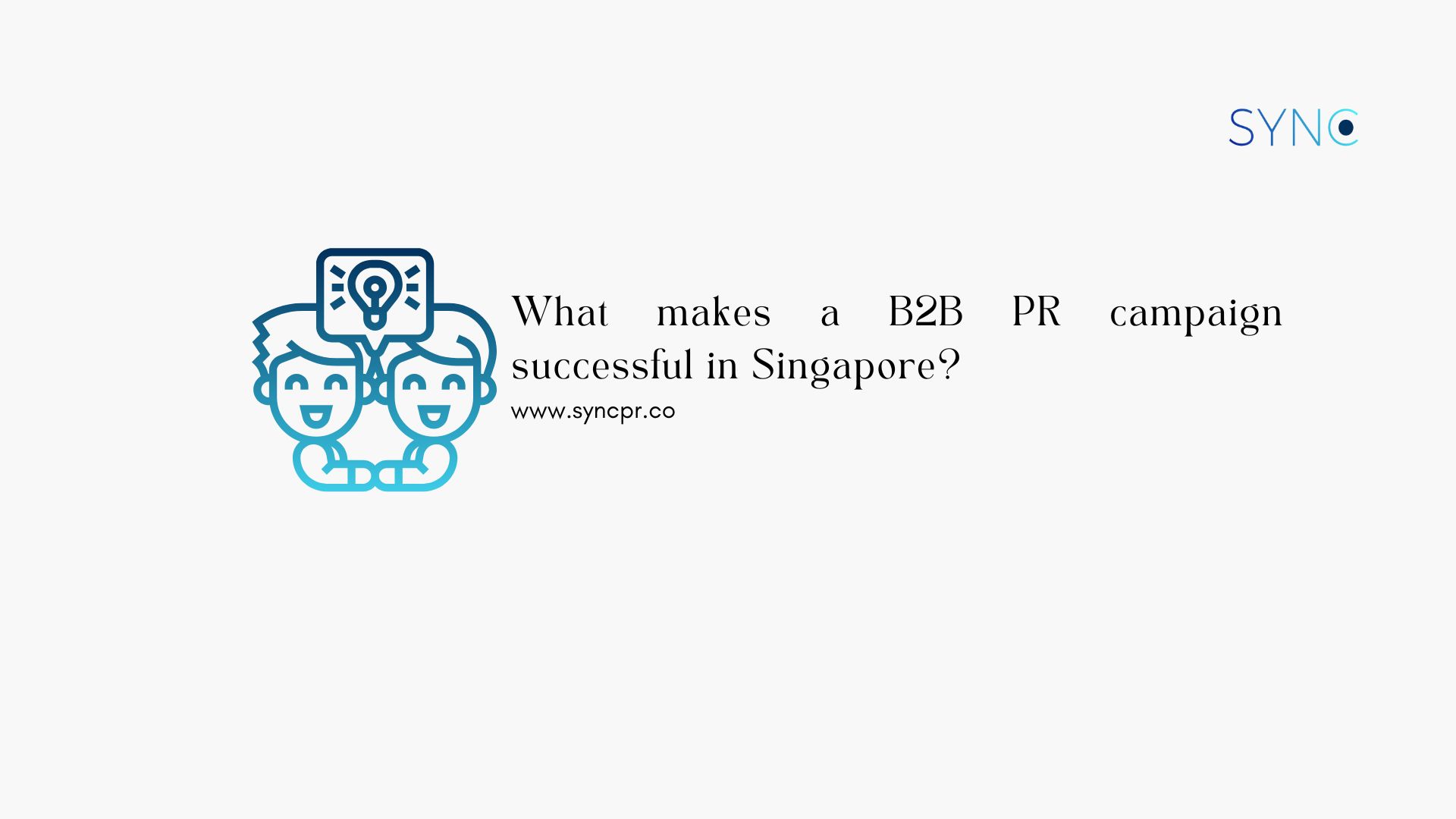B2B PR can be tricky. Within my two years as a public relations specialist at SYNC PR, I have witnessed firsthand how the industry has evolved rapidly due to the advancement of technology that resulted in a change in consumer behaviour. In Singapore, the consumption of news appears to be through online and social media means, while both TV and print media are sources of news that have declined significantly. For instance, print media has shown to decrease from 53% to only 20% between 2017 and 2024 while online media (including social media) remained consistently between 83% to 85% between the same period.
It is hence not surprising that mainstream news brands like SPH Media Trust’s The Straits Times (ST), and Mediacorp’s Channel NewsAsia (CNA) introduced online platforms for news consumption. With that move, both media publications continue to experience consistent stability in trust towards these news publications, ST (73%) and CNA (74%), amongst Singaporean consumers.
While the shift towards online news websites for news consumption shouldn’t be news to most public relations specialists, the shift towards social media for news consumption, in particular, is.
PR specialists must understand the Great Platform Reset to get B2B PR right
It is fair to say that any changes brought forth in the media industry would directly impact the role of public relations specialists. After all, PR is the art of managing how information about an individual or organisation is disseminated to the public, and this is often through the usage of media publications. The last few decades have shown how information is found and distributed, and how experiences are shared, but it has also shown how traditional PR methods, like press releases and in-person media interviews, are slowly losing their foothold.

The Great Platform reset represents the change in how information is consumed. The Reuters Institute Digital News report suggested that we’re currently in a state of a technological shift where we see more social media platforms, such as Meta, adjusting their strategies to align with the changing consumer behaviour and increased regulatory concerns about misinformation. However, while many of the social media platforms consist of a younger user base, a target audience media publications are trying to focus on, these platforms are showing reluctance to include news within their platforms as it causes more harm than good.
Is B2B PR still relevant?
The answer is clear. By studying the motivations behind the usage of social media, media publications will be able to better engage audiences and rebuild trust. Three core factors contribute to the rise of consuming content on social media – 1) the unfiltered nature of the coverage makes content more trustworthy and authentic, 2) with more Singaporeans using mobile phones to seek content, the convenience of having news served on a platform that’s already in use is a necessity, and 3) ability to receive a diverse perspective as opposed to mainstream media. As long as media publications refocus their strategy towards building authentic, factual, and transparent and avoid low-quality AI-written content, the media landscape will never fail but instead, evolve.
Hence for public relations specialist to help their clients excel in this changing landscape, they must keep these three factors in mind. Nonetheless, rather than the role of public relations specialist being obsolete in the near future, it is about the role expanding and re-shaping towards building a better relationship not just through traditional media outlets, but also through social media platforms where audiences can be engaged directly.
For more information on how modernisation has transformed the PR landscape, read this article!
Future-proofing B2B PR
At SYNC PR, I’ve worked with close to 30 clients across multiple industries from tech clients to lifestyle, to marketing and even human resources, and securing nearly 400 media coverages including on media publications such as The Straits Times, The Edge, CNA, TechNode Global and more, here’s what I found to have been incredibly helpful elements in building a successful B2B PR campaign.
Unlike B2C clients, reaching out to their target audience isn’t as straightforward as posting on social media, where it typically reaches direct consumers. For B2B PR, because any purchase or decision made to purchase a product or solution would affect the business, there is typically more research that happens. As such, B2B companies would need to constantly prove the reliability and success of their solutions/products. The best approach for public relations specialists to do so would be through, but not limited to:
- Interview opportunities with trusted media publications
- Thought leadership opportunities with trusted media publications
- Product launches
- Event creation
- Crisis management
However, before securing these opportunities, public relations strategists must first develop a well-structured communication strategy. Nonetheless, with the fast-changing nature of the PR industry, here are some tips to future-proof your PR campaign for 2024/2025, particularly for your B2B clients.
- Identify the maturity of your target audience and develop a corresponding brand message
Identifying the maturity of your target audience is a critical component in crafting an effective public relations strategy. Understanding where your audience stands in terms of knowledge, experience, and engagement with your brand or industry allows you to tailor your messaging in a way that resonates with them. For instance, a more mature audience may appreciate in-depth analysis, expert opinions, and detailed data, while a younger or less experienced demographic might respond better to simplified, engaging narratives that emphasise relatable experiences and emotional connections. By assessing the maturity level of your audience, you can ensure that your communication efforts are not only relevant but also impactful, enhancing the overall effectiveness of your PR initiatives.
Once you’ve identified the maturity of your target audience, developing a corresponding brand message becomes the next crucial step in your public relations strategy. This brand message should align with the values, expectations, and preferences of your audience, ensuring that it speaks directly to their needs and motivations. A well-crafted brand message can serve as a guiding principle for all your communication efforts, providing clarity and consistency across various platforms and touchpoints. It should reflect the essence of your brand while addressing the specific interests of your audience, ultimately fostering a deeper connection and encouraging engagement.
- Developing a media list and segmenting it into various industries
Developing a comprehensive media list and segmenting it into various industry categories is crucial for a successful B2B PR strategy. In today’s dynamic media landscape, we are witnessing a significant shift from broad, generalist publications to a growing number of niche media outlets that cater to specialised interests. This evolution highlights the importance of tailoring your outreach efforts to specific sectors such as technology, human resources, lifestyle, and more. By recognising the unique needs and interests of these niche audiences, public relations strategists can craft targeted messages that resonate more deeply with journalists and their readers. This strategic approach not only enhances the likelihood of media coverage but also positions your brand as a relevant and credible source within its respective industry.
Moreover, the segmentation of your media list enables you to create and distribute media pitches that are highly relevant to each target audience for a B2B PR campaign. A single product or service may have applications across multiple industries, making it essential to customise your communication strategy accordingly. By aligning your pitches with the specific interests of each niche publication, you can effectively engage journalists who are looking for content that directly pertains to their readership. This targeted outreach not only increases the chances of your pitches being picked up but also fosters stronger relationships with media professionals, ultimately contributing to a more robust PR presence for your brand across various platforms. In an era where media attention is both highly sought after and fiercely competitive, precision in targeting is more important than ever for achieving successful PR outcomes.
- Choosing the appropriate spokesperson for a B2B PR campaign
Choosing the appropriate spokesperson for your B2B PR campaign is pivotal to the success of any public relations campaign. While many organisations tend to gravitate towards their CEO or founder as the face of their messaging, this approach may not always yield the best results, especially in industries where technical proficiency is paramount.
For products or services that are intricate or highly specialised, such as those found in the technology sector, it is crucial to select a spokesperson who possesses not only a deep understanding of the product but also a comprehensive grasp of the industry landscape. This individual should be capable of articulating complex concepts in a manner that is accessible to a diverse audience, ensuring that key messages resonate effectively. Moreover, media training is essential, as it equips the spokesperson with the skills needed to navigate interviews and presentations with confidence, clarity, and professionalism.

Furthermore, adaptability in spokesperson selection can significantly enhance the effectiveness of your B2B PR outreach. Depending on the pitch angle and the specific media outlet you are targeting, it may be beneficial to tailor your spokesperson accordingly. For instance, a technical expert may be more suited for a trade publication, while a charismatic leader might be a better fit for a business magazine. The key is to maintain a consistent brand message across all representatives, ensuring that regardless of who is speaking on behalf of the company, the core values and objectives remain intact. By taking a strategic approach to spokesperson selection, brands can maximise their impact in the media landscape and foster stronger connections with both current and potential clients.
- Identifying your B2B PR campaign KPIs
One of the key aspects that B2B PR strategists often overlook is the development of Key Performance Indicators (KPIs) to effectively measure the success of their campaigns. I have also found myself, at times, relying too heavily on intangible outcomes such as brand sentiment or reputation enhancement, which, while important, do not provide a concrete assessment of our efforts. This tendency to prioritise qualitative measures over quantifiable metrics can significantly hinder our ability to demonstrate the true impact of our work.
It is essential to establish clear KPIs that allow us to track progress and results, thereby enabling us to make informed adjustments throughout the B2B PR campaign. By shifting our focus towards measurable outcomes, we can better articulate the value we bring to our clients and foster a more accountable approach to public relations.
Currently, many PR professionals focus predominantly on media coverage as the primary metric for measuring success. However, this narrow view raises an important question: what does media coverage truly do for our clients? When clients engage in our services, they do so with the expectation of achieving a high return on investment (ROI). While media coverage is certainly a valuable component of a PR strategy, it does not automatically translate into higher ROI. Instead, we must recognise that media coverage serves as a catalyst for a series of actions, such as increased brand awareness, improved click-through rates, and ultimately, higher conversion rates.
It is this chain reaction that leads to tangible ROI, highlighting the need for a more comprehensive approach to measurement that accounts for the entire customer journey, from initial exposure to final conversion. By expanding our metrics beyond media coverage alone, we can provide B2B PR clients with a clearer picture of how our efforts contribute to their overall business objectives.
Recognising the importance of a blended communication strategy for B2B PR
The key to future-proofing a public relations (PR) campaign lies in recognising the critical importance of a blended communication strategy. Public relations strategists must understand that the distinction between social media marketing and traditional PR has become increasingly blurred. No longer can organisations afford to view these two domains as separate entities. Social media has transformed from a platform primarily for sharing entertaining content into a vital source of information. Audiences are now turning to platforms like Twitter, LinkedIn, and Instagram not just for engagement but for credible updates on current events and industry trends. As such, businesses must adapt by integrating their PR efforts with social media strategies, ensuring that messaging is consistent and impactful across all channels.
The traditional model of PR, which often operates in a siloed manner, risks becoming obsolete in this interconnected environment. To remain relevant and effective, PR professionals must embrace a more holistic approach that includes influencer marketing as a core component of their strategy. By leveraging the voices of key stakeholders and turning them into influencers within their respective fields, organisations can amplify their reach and enhance their credibility.
Platforms like LinkedIn offer unique opportunities for thought leadership and professional networking, enabling brands to engage directly with their audiences in meaningful ways. As the landscape continues to evolve, it is essential for PR practitioners to not only adapt but to innovate, ensuring that their campaigns resonate with today’s digital-first audiences.
If you’re looking for a team that understands how to future-proof your B2B PR campaign, do not hesitate to drop us an email at hello(a)syncpr.co

